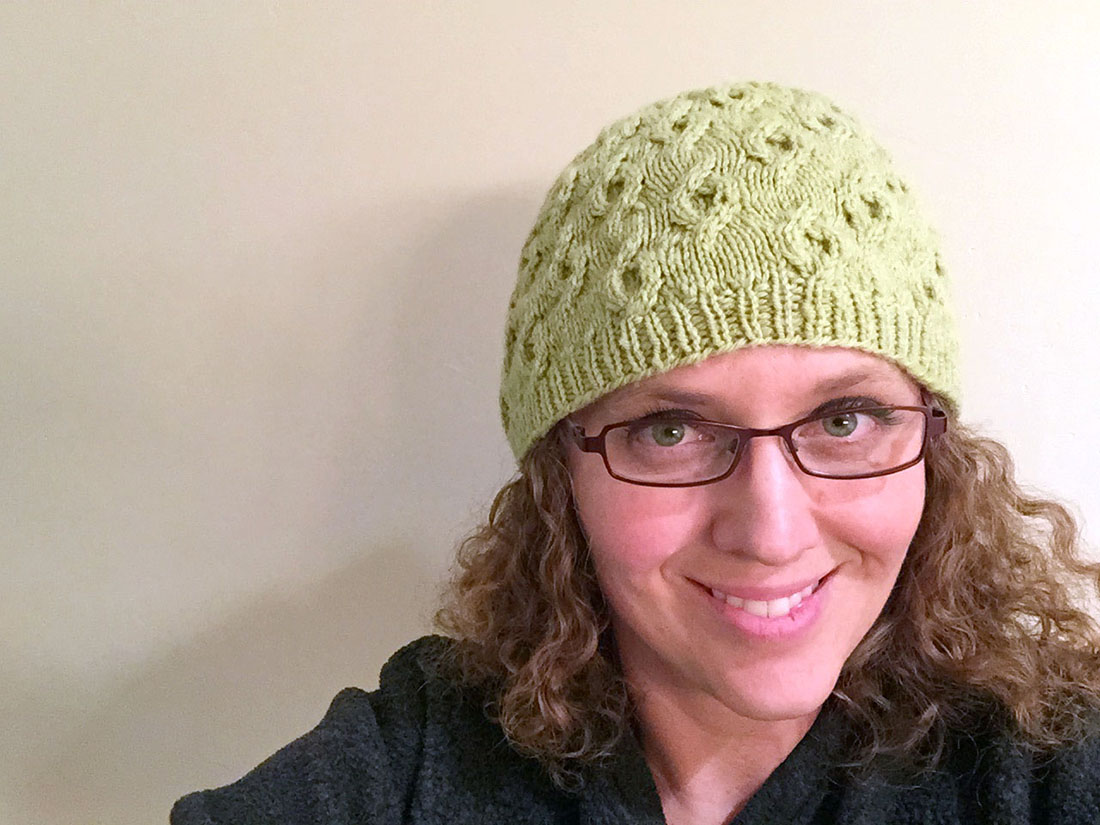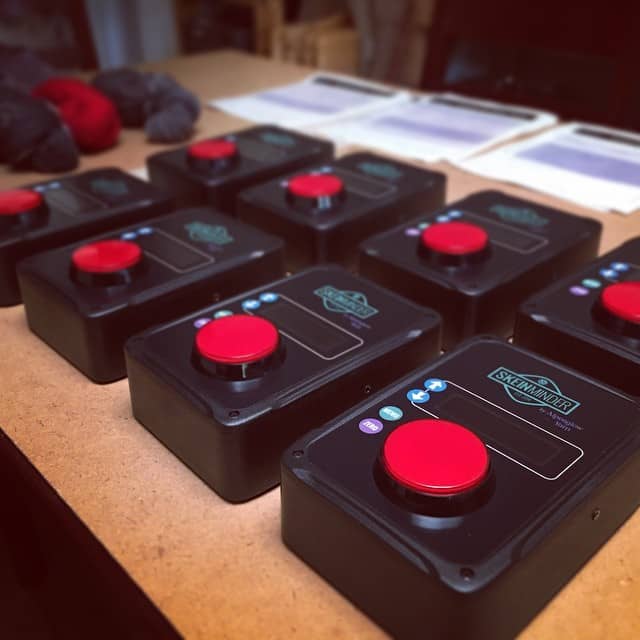Knitting and electrical engineering might not seem to have much in common, but they link together perfectly for Carrie Sundra. A few years ago, Sundra, who created a naturally-dyed yarn business called Alpenglow Yarn after feeling burnt out by her career as an electrical engineer, decided to use her technical expertise to help her business, and her fellow yarntrepreneurs.
After winding skein after skein of yarn for a major fiber event where she was vending, Sundra ran with “necessity is the mother of invention” and created a machine called the SkeinMinder, an accessory to the small motorized tabletop winders many small dyers use to create their sellable hanks. The device automatically stops the winder when the pre-programmed yardage is reached, allowing dyers to focus on other things instead of watching the rotation counter on the winder. The device was a hit, and Sundra funded production through the $70,000+ raised via a successful Kickstarter campaign.

Now, she’s back at it, and recently began working on a device called the SkeinTwister, a machine that uses a hook-like attachment to twist skeins, cutting down on tons of manual labor and potential injury-causing repetitive movements and, ideally, creating consistently twisted skeins that let shoppers focus on the beautiful colors.
“Twisting skeins is one of those things that doesn’t seem like such a big deal, until you have to do hundreds all at once,” says Sundra, who is based in San Luis Obispo, California. “Even dyers who sell smaller volumes will typically have a big crunch time right before a yarn show, when they’re finishing up as much inventory as they can to take with them. If you’re twisting everything by yourself, it really wears on your fingers, wrists, and elbows.”

“Most of my experience is with building electronics hardware, and since the SkeinMinder is a purely electronics hardware device, it was easier and faster for me to develop,” Sundra explains. “I already had the right computer programs, vendors lined up, everything. The SkeinTwister is a different beast because it actually has to move and has force applied to it, so there’s a large mechanical design component. I had to do a bunch of research to just figure out an affordable CAD program, and it took some time to learn its quirks. Then I had to figure out how to get the custom hook manufactured and find the right vendor. I had to do a lot of motor research and find the right style and vendor for that. It’s definitely been a more challenging project, and there have been more iterations and testing throughout.”
Pricing is also a big challenge. Normally, Sundra would take the cost of materials and labor, double it for the wholesale price and quadruple it for the retail price. However, since the materials and labor costs are fairly high, the devices won’t sell if they’re priced too high. And because they don’t have the same demand as a cell phone or kitchen appliance, setting a price becomes even more complicated — all while Sundra is trying to cover advertising and other administrative costs and make a profit.
Katie Franceschi, the dyer behind Yarn Love, a studio located just outside Des Moines, Iowa, says the SkeinMinder and SkeinTwister, which she has beta tested, are indispensable to her business, which is 80 percent wholesale. “Winding and twisting skeins used to take more time than the actual hands-on dyeing process,” Franceschi says. “With the SkeinTwister, I can have a skein fully twisted and ready for a yarn band in 15 seconds. I estimate it saves me about 60 to 70 percent over twisting manually. It also reduces the amount of repetitive motion, making twisting much more comfortable… I had a difficult time sending my beta-unit back for a software update this summer. I would go so far as to say that the Minder and Twister are indispensable for any indie yarn artist who relies on efficiency and accuracy to keep their studio profitable.”


Lisa Chamoff
contributor
Lisa is a freelance journalist in the New York Metro area who specializes in home design, real estate and healthcare. When she’s not writing, or knitting shawls and sweaters, Lisa runs Indie Untangled (www.indieuntangled.com), a marketplace and blog that promotes the work of yarn dyers, pattern designers and crafters of knitting-related accessories.


Trackbacks/Pingbacks